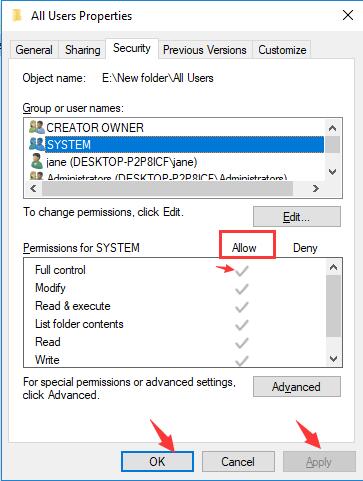

Try all of them starting from Method 1 to see which one works best for you, and don't forget to take a backup in case the folder you're deleting has important information that needs to be accessed later.All accounts, including the administrator account created when setting up your machine, run with limited - not administrative - permissions by default. These are all the different ways to fix the "you need administrator permission to delete this folder" alert thrown up by Windows when deleting a folder. If you need to preserve a copy of the folder, make a backup before using such utilities. You can try something like CCleaner,to delete the folder in a way that it can not be recovered. There are also several third-party utilities that you can use to delete folders and remove the annoying alert. Method 5: Delete a Folder on Windows 10 via Third-party Software You can now restart your PC and delete the folder. Step 3: After the scan is complete, the utility will have automatically fixed the corrupted folder. Step 2: Input the following text in the command line and hit Enter: sfc /scannow Step 1: Open elevated Command Prompt using Step 1 shown in Method 3 above. It requires a little bit of time because of the scanning process involved, but it should help resolve the "you need administrator permission to delete this folder" alert. SFC will help identify corrupted files and folders, and fix them so you can delete them. Method 4: Repair and Delete a Folder with SFC (System File Checker) If that's your situation, you can easily fix the problem using the built-in System File Checker utility in Command Prompt. In certain cases, you can't delete a folder because it is corrupted. Since the account has admin permissions, you can go ahead and delete the folder in question.

When you restart your computer, log in using the default admin account and the new password. Step 3: Now, type this next command, followed by Enter: net user administrator Step 2: Input the following line of text in the command line and hit Enter: net user administrator /active: yes You can also search for Command Prompt in the Start menu, right-click and choose Open as Administrator in the contextual menu. Step 1: Open Command Prompt in elevated mode by clicking Ctrl+Shift+Enter. On your PC, reproduce the following steps: You can then use this account to gain permission for deleting the folder in question. Elevated CMD is merely the version of the Windows command line utility that has added administrator privileges. Windows usually comes with a default admin account that you can activate using elevated Command Prompt. Method 3: Use Command Prompt to Activate Default Administrator Account


 0 kommentar(er)
0 kommentar(er)
